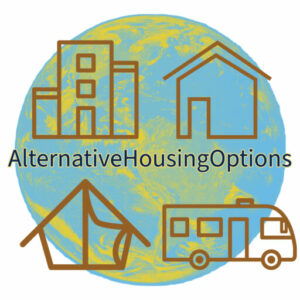There are over 25 different types of Alternative housing options that have gained popularity in the last 20 years, like tiny homes, shipping container homes, converted railcars, buses, modular homes, prefabricated homes, barndominiums, shomes, yurts, earthberm, earthbag, adobe homes and many more. As people look for eco-friendly and affordable living options, they find that financing such a home can be tricky. Traditional mortgage options are not always available for alternative housing, but options are still available for those looking to finance their alternative home. Let’s look at what disqualifies a home from traditional financing and the options available for alternative housing.
What Disqualifies a Home From Traditional Financing?

It’s a fixer-upper, and renovations were unfinished– Homes must be safe and livable dwellings to qualify for a traditional mortgage. Code of Federal Regulations standards for a safe dwelling typically “include heating, an electrical supply, cooking facilities, a supply of hot and cold water, a method of sewage disposal and structural stability that is sound and free of hazards.”
No comparable properties – If a home is too unique and unlike any others in its neighborhood might not qualify for traditional financing. This can result in an inaccurate appraisal and issues with a lender. This explains why many banks won’t finance Earthships, earthberm, earthbag, geodesic dome homes, or other unique properties.
Unpermitted additions – Mortgage lenders might refuse to approve a home loan if the current owner conducted unpermitted renovations or constructed illegal additions on the property. To proceed with the sale, the seller must permit the work retroactively.
Liens on the title – A home might not qualify for traditional financing if there are liens on the house’s title. When a lender files a lien against your property, it allows them to foreclose on your home if you violate any terms. These include a property tax lien, federal tax lien, homeowner’s association lien, mechanic’s lien, and judgment lien. Any liens would need to be paid to purchase the home.
While there might be ways to remedy financing for traditional homes, what about alternative housing?
Are there financing options available for alternative housing?
Financing for alternative housing is not as easy as traditional, stick-built homes. If you can secure the financing, it will rely much more on your financial situation and not take the home’s value into account due to its uniqueness.
Here are thirteen financing options available for alternative housing
- Personal loans
- Construction loans
- FHA 203(k) rehab loans
- Chattle loan
- Private money lender
- Balloon loan
- RV loan
- Local bank
- Cash
- Credit cards
- Rent to own
- Seller Financing
- Home equity line of credit
Disclaimer: Please keep in mind these are options; this is not financial advice as we are not financial advisors or bankers at Alternative Housing Options. We are simply sharing the financing information available. In all situations, please consider your financial situation or visit a local financial advisor or banker.
1) Personal loans
Personal loans can be used for various purposes, including buying land, constructing, or purchasing a home. These loans are typically unsecured, meaning you don’t have to purchase any collateral, such as your home, to obtain them. Interest rates on personal loans can be much higher than traditional mortgages, so shopping around and comparing rates from different lenders is crucial.
2) Construction loan
These loans are specifically designed to finance the construction of a new home, including alternative housing options. Like personal loans, home construction loans are typically unsecured, but they may have slightly lower interest rates than personal loans. Some lenders may require that you have a certain amount of equity in the land where your alternative home will be built.
3) FHA 203(k) rehab loan
The FHA 203(k) rehab loan allows the borrower to finance the home purchase plus the cost of repairs and renovations. This loan is a great option for those looking to purchase an existing alternative home that needs work. The 203(k) loan allows the borrower to roll the cost of repairs and renovations into the mortgage, making it easier to afford the home. With an FHA 203(k) rehab loan, buyers can borrow as much as 110% of a distressed property’s estimated future value to cover the cost of repairs and renovations. Buyers who mortgage their homes through the FHA 203(k) loan program are exempt from most standards.
4) Chattel loan
A chattel loan is a type of loan that is used to finance a manufactured or mobile home. Chattel loans are best suited for those looking to purchase a tiny home, shipping container home, manufactured home, or mobile home that is on wheels and can be moved. This type of loan is often easier to qualify for than traditional mortgages, but the interest rates are often higher.
5) Private money lender
Private lenders are typically individuals or small companies that lend money for specific projects, such as alternative housing. They are usually more flexible than traditional lenders and can often offer loans with more favorable terms. However, the interest rates may be higher than those of traditional loans.
6) Balloon Loan
Balloon loans are mortgages that operate on a lump-sum payment schedule. For buyers, this means that during the life of the loan, you’ll pay the balance as one large payment or “balloon.” When and how you pay off a balloon loan depends on terms set by your specific lender. This term is usually between five and seven years as opposed to the typical 10, 15, or 30-year mortgage terms.
7) RV loans
A tiny home, RV, Schoolie, Van Camper, or Converted Box Truck might qualify for an RV loan. To get an RV loan, it must comply with the U.S. Department of Transportation’s National Highway Traffic Safety Administration standards. It will have to be deemed roadworthy by the Recreation Vehicle Industry Association (RVIA). The tiny home may have to be your primary residence to get an RV loan from some lenders. With an RV loan, the foundation doesn’t matter. You don’t need to park it permanently. You can find banks that offer terms of up to 20 years. The interest rate is typically higher than a standard mortgage loan. While with a personal loan, you may only get seven-year terms.
8) Local bank financing
You might also be able to finance your alternative property purchase with a loan from your local credit union or community bank. Some prefer these arrangements over traditional lending because they work with residents. They may also have in-house financing options or products that will work better for alternative housing than a national bank.
9) Pay with cash
Paying for an alternative house upfront in cash is the most ideal method of financing. While this option isn’t feasible for everyone and depending on the type of home you are trying to buy or build, this may take years of saving. However, it makes the most sense in the long run if you’re looking to avoid the potential risks of taking out loans. If you can ultimately pay for your tiny house, shipping container home, silo home, aircrete home, or other alternative homes, you will not need to worry about paying for any loan.
10) Finance with credit cards
It’s possible to purchase an alternative home with credit cards, though it is not recommended. You need a couple of things in place for this option to work – a high enough balance and the ability to pay the payments with interest. Due to interest payments and not paying off the balance, the payments will become increasingly expensive.
11) Rent to own
Buying a property rent to own can be a good option for both the buyer and the seller. If the buyer can come up with a large enough down payment, the seller will have confidence that the buyer has enough skin in the deal to go through with the purchase. Then over time, a portion of the rent-to-own payment goes toward the mortgage and credit for buying the house at the end of the contract term. This extra is placed in escrow to finalize the purchase. While this isn’t feasible for some, the payments are a little higher than a standard mortgage but without the need to qualify for financing, at least initially.
12) Seller Financing
Seller financing is a contract that allows the buyer to pay monthly payments directly to the seller. If the seller still carries a mortgage, the mortgage lender might allow the buyer to assume the seller’s existing mortgage. Buyers must be wary of this arrangement, as the current homeowner might not be legally allowed to offer to finance.
Instead, the seller and buyer might agree to a seller-carried mortgage or trust deed. They can do this legally if the seller owns the house outright and is no longer paying off a home loan. Sellers can offer buyers this type of financing as long as “the seller did not build the home” and “there is no balloon payment.” The seller must also meet all “criteria established by the Federal Reserve Board.” This means the buyer will owe a reasonable monthly payment and pay interest at a reasonable rate for the entire loan term.
13) Home Equity Line of Credit or Home Equity Loan
This method only works if you own a home and have equity built up. If that’s the case, you could get a home equity loan or line of credit to purchase land, an alternative house, and finish any necessary repairs. With a HELOC, money is released in installments, while the homeowner receives a lump sum of cash with a loan. The interest rate on a HELOC and a home equity loan will likely be higher than that of a traditional home loan.
Other things you need to know before you look for alternative housing financing

Land to build on
You need some land to build on, whether you’re building a tiny house, prefabricated home, mobile home, yurt, or treehouse. You can’t just build anywhere. You may have to finance a plot of land if you’re not building it on an existing property. Undeveloped land can be difficult to get financed.
Once you’ve found a way to pay for the land, you’ll have to consider local regulations. Zoning laws might dictate what you can build on your purchased land. It is possible to rent land rather than buy one, though this can be costly. There are even some tiny home communities where you can rent land to park a tiny house.
Resale value
Alternative housing on wheels can be moved; they depreciate similarly to cars. Like other vehicles, they are susceptible to wear and tear associated with use over time. They also require maintenance.
If you have a traveling alternative home, you need to pull it
If you ever wish to relocate your alternative home on wheels and it isn’t built on a permanent foundation, you can pull it with a large vehicle like a truck. In this way, you can take your home anywhere across the country. With traveling alternative housing, you get freedom in exchange for the cost of moving the home across long distances with a larger vehicle.
You can’t park anywhere
While many tiny houses and traveling alternative housing owners may place their tiny home on a lot and never move it, others embrace the potentially mobile nature.
Many national parks and campsites across the U.S. can stay on their grounds for an extended time to accommodate tiny homeowners and other forms of traveling alternative housing. This can be a great option for people looking to travel.
It’s important to note that the availability of financing options for alternative housing will vary depending on the location and type of housing you’re looking for. It’s always best to research and shop around to find the best financing option. Additionally, working with a qualified mortgage broker who understands alternative housing and can help you navigate the process is essential.


